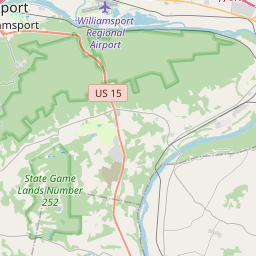Civil War Memorial
Historical marker location:






April 12, 1861: The Civil War begins with the Confederate attack on Fort Sumter, located in South Carolina's Charleston Harbor.
April 15, 1861: President Abraham Lincoln issues a call for 75,000 volunteers to serve in the Union Army to suppress the rebellion.
May 24, 1861: The first major land battle, known as the First Battle of Bull Run (or First Battle of Manassas), takes place in Virginia. It ends in Confederate victory.
September 17, 1862: The Battle of Antietam in Maryland becomes the bloodiest single-day battle in American history, with heavy casualties on both sides. The Union forces, commanded by General George McClellan, manage to halt Confederate General Robert E. Lee's advance into Union territory.
January 1, 1863: President Lincoln issues the Emancipation Proclamation, declaring that all slaves in Confederate-held territories are to be set free. However, the proclamation does not immediately free all slaves in the United States.
July 1-3, 1863: The Battle of Gettysburg in Pennsylvania takes place, resulting in a significant Union victory and inflicting heavy casualties on Confederate forces. It marks a turning point in the war.
November 19, 1863: President Lincoln delivers the Gettysburg Address, emphasizing the principles of liberty, equality, and the preservation of the Union.
April 9, 1865: General Robert E. Lee surrenders to Union General Ulysses S. Grant at Appomattox Court House in Virginia, effectively ending the Civil War.
April 14, 1865: President Lincoln is assassinated by John Wilkes Booth while attending a play at Ford's Theatre in Washington, D.C.
May 10, 1865: Confederate President Jefferson Davis is captured, signaling the collapse of the Confederate government.
December 6, 1865: The Thirteenth Amendment to the United States Constitution is ratified, officially abolishing slavery throughout the country.
While this timeline provides an overview of key events, it is important to note that the Civil War spanned over four years, from 1861 to 1865, and encompassed numerous battles, campaigns, and political developments that shaped the course of American history.
Pennsylvania was home to the first all-volunteer firefighting company in America, which was established in Philadelphia in 1736.
European settlement in the area began in the 18th century, with the arrival of fur traders and pioneers. In 1763, the first permanent settlement was established by British settler James Brady, who built a log cabin near present-day Muncy. The county was officially formed in 1795, named after the river that flows through it, Lycoming Creek.
During the late 18th and early 19th centuries, Lycoming County experienced rapid growth as a result of the lumber industry. The region's vast forests provided an abundant supply of timber, attracting numerous sawmills and loggers. The arrival of the Pennsylvania Canal and the Pennsylvania Railroad in the mid-19th century further stimulated the county's economic development, allowing for easier transportation of goods and people.
In the late 19th and early 20th centuries, Lycoming County diversified its economy, with the establishment of manufacturing industries such as textiles, furniture, and locomotive production. The county also played a significant role during World War II, with the construction of the Williamsport Army Airfield and the production of military equipment.
Today, Lycoming County is known for its vibrant cultural scene, stunning natural beauty, and strong sense of community. The county hosts various events and festivals throughout the year, including the Little League World Series and the Pennsylvania State Laurel Festival. With its rich history and promising future, Lycoming County continues to be a dynamic and thriving region in Pennsylvania.
Lycoming County Timeline
This timeline provides a concise overview of the key events in the history of Lycoming County, Pennsylvania.
- Pre-1772: The area that is now Lycoming County was home to Native American tribes, including the Susquehannocks and the Senecas.
- 1772: The first European settlers, James Alexander and James Armstrong, arrive in what is now Lycoming County.
- 1795: Lycoming County is established by the Pennsylvania State Legislature.
- 1804: The first courthouse is built in Williamsport, the county seat of Lycoming County.
- 1823: The Lycoming Gazette, the first newspaper in the county, is established.
- 1839: The Susquehanna Boom, a system of interconnected logs on the river, is constructed to facilitate the transportation of timber down the river.
- 1861-1865: Lycoming County, like the rest of the country, is deeply affected by the American Civil War.
- 1871: The Williamsport Hospital, the first hospital in the county, is founded.
- 1889: The first Little League Baseball game is played in Williamsport, marking the beginning of a long association between the city and the sport.
- 1928: The Williamsport Regional Airport is established.
- 1979: The Little League Baseball World Series is permanently moved to South Williamsport.